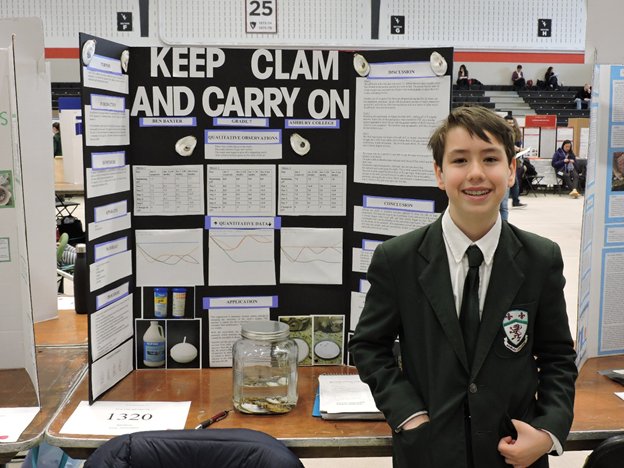by Lucy Patterson
How is plant growth affected by grey water? How can we build better passageways around dams for migrating fish? How does ocean acidification affect clam shells? These questions and more were tackled by bright young scientists at this year’s Ottawa Regional Science Fair.
During this event, which occurred on April 6 and 7, 2018 at Carleton University’s “Raven’s Nest,” 164 students in grades 7-12 from the Ottawa-Gatineau region came together to present their science projects. Since 1961, this volunteer-run event has encouraged students to design, develop, and present research projects in science and engineering. The students with the best projects are then invited to participate in a Canada-Wide Science Fair, which will occur this year from May 16 to 18. The Canada-Wide Science Fair occurs in a different city every year, and in 2018 it will be hosted in Ottawa!
Every year, the OFNC presents awards to the creators of two or three outstanding projects that “demonstrate a knowledge of some aspect of natural history, field ecology, or wildlife conservation.” I have judged these projects with Kathy Conlan, a research scientist at the Canadian Museum of Nature, for the past four years. Students self-nominate themselves for the award, and this year there were eight entries.
There were three OFNC award winners in 2018: Graeme Hopkins, Islombek Mukhamadiev, and Ben Baxter.
For his project, “The impact of the environment on the biodiversity of Pseudogygites latimarginatus,” Graeme Hopkins collected trilobite fossils in the Ottawa area (see photo below) and compared the lengths of specimens from shallow and deep water. Given that fossils from shallow water were smaller than those from deeper water, he hypothesized that P. latimarginatus had a similar life history to horseshoe crabs, that live in shallow water as juveniles and move to deeper water as they mature.

Graeme Hopkins with his project, “The impact of environment on the biodiversity of Pseudogygites latimarginatus” entered in the Junior “Discovery” category.

Examples of trilobite (Pseudogygites latimarginatus) fossil fragments that Graeme Hopkins measured to compare the length of shallow and deep water specimens.
Islombek Mukhamadiev, in his project “Permafrost at risk! Impacts of human disturbance on near-surface permafrost in the boreal forests of the Northwest Territories,” visited 17 sites of varying degrees of anthropogenic disturbance near a town in the Northwest Territories. He demonstrated that sites with high (e.g., forest fires) and medium (e.g., tire tracks) disturbance were less likely to have near-surface permafrost.

Islombek Mukhamadiev with his project, “Permafrost at risk! Impacts of human disturbance on near-surface permafrost in the boreal forests of the Northwest Territories.” Islombek entered the Senior “Environment” category.
Finally, in his project, “Keep clam and carry on,” Ben Baxter demonstrated that increasing the carbon dioxide concentration in the air with a candle floating on water in an enclosed jar increased the acidity of water. He also demonstrated that clam shells began to disintegrate in acidic water and effectively buffered the pH.
Each project was awarded a $100 prize. Congratulations to Graeme, Islombek, and Ben for their exceptional projects!

Some clam shells beginning to disintegrate in acidic water. Ben Baxter used these to demonstrate the effect of ocean acidification on clams.



Leave A Comment